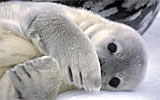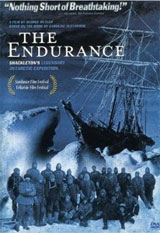|
|

|
||
 |
|
|||||
| Antarctica Picture | Antarctica Cruise | Facts | History | Boots | Store | Clothes | Whales | Books | Video | Schools | Forum | Site Map | FIDS / OAE's |

| Whaling pictures | Whales | Species | Whaling Antarctica 1 2 | Whales & food webs | Whaling cards |
| Whales species: Blue | Fin | Humpback | Minke | Orcas | Right | Sei | Sperm | Sperm whale tales |
| Whale pictures to buy Beluga whale Blue whale Bowhead whale Grey whale Humpback whale Killer whale Right whale Sperm whale |

11 A Right Whale
The Right Whale is found in the northern Pacific and the Behring Sea, and provides the "whale bone" popularly but erroneously associated with every species of whale. This whale is a surface-feeder, rushing through the water with open jaws. At intervals the jaws close and the water is forced out of the plates or blades of baleen ("whale-bone") of which there are some 380 or more on each side. These form an efficient sieve or strainer through which the water is drained off leaving behind the minute organisms and tiny fish on which the whale feeds. By reason of its massive jaws the Right Whale cannot see in front. |

12 A "School" of Whales
While lone whales are met with in all seas, it is usual for them to congregate together in "schools" partly in order to protect the young calves. These calves are vulnerable to attack by sharks and it is a wonderful sight to see a mother-whale tuck her baby under her flipper for safety. Sometimes a large school of cows and calves will be under the guidance of a few bulls, and these "school masters" are generally very savage and liable to show fight. There is some strange medium of communication between the whales in a school and at the slightest noise they may be easily gallied and all hope of capture lost. |
 13
Sharks round a Dead Whale 13
Sharks round a Dead WhaleStrange as it may sound, the whaler sees more sharks than any other seaman. When the carcase of a whale is being towed and "cut-in" it is no exaggeration to say that the water fairly teems with sharks. They rush through the water at great speed and mount upon the side of the huge carcase, tearing away pieces of blubber as large as footballs. Many sharks are decapitated or transfixed by the keen-edged whaling-spades used for "cutting-in". |
 14
"Trying Out" 14
"Trying Out" The blubber after being cut into large slabs called horse pieces, is taken to the mincer. In the old-style whaler one man held the blubber while another with the mincing-knife cut the blubber into thin strips called bible-leaves. "Trying-out" was started on the head, as the oil from this is of great value. The case a large cavity in the head is practically filled with liquid speramceti, which solidifies into the brittle white fatty substance used for candles and ointments : the junk, a triangular mass at the snout being also rich in the same material. At the present time oil is also extracted from the whale meat and bone by means of steam presses. |
 15
"Gamming" 15
"Gamming"In the old whaling days, when the ship's crews had, perhaps, been separated from kith and kin for two or three years, the meeting of two whalers was an occasion for great rejoicing, for a mere passing salutation was by no means sufficient. A certain amount of ceremony was observed in the greeting of the skippers and news of home was eagerly sought. Outward bound vessels were eager to learn all they could about the hunting grounds, while both crews made the most of an opportunity to "let off steam" in boisterous song and dance. Old-fashioned chanties and sentimental songs of sweetheart, wife and home were heard, and yarns were exchanged. |

16 "Breaching"
One of the most marvelous feats performed by the whale is that movement called "Breaching". Imagine a creature 90 feet long, leaping clear of the water and momentarily suspended in the air. Then an awful crash and swirl accompanies its fall back into its native element. As most if not all of the propelling power of the whale lies in its huge tail, some notion of its strength may be obtained by considering this strange feat. |

17 "Stoved"
"Beware of a Sperm's jaw and of a Right Whale's flukes". In the old whaling days blows from the flukes or tail caused the loss of many lives. Frequently they crashed into the boat with all the force of tons of weight added to enormous muscular strength. In a moment the boat would be smashed to splinters, and he men not only in danger of drowning, but of blows from the huge tail, from broken fragments of the boat or from the weapons which the boat was loaded. It is surely a reminiscence of the whaler's life that the word "fluke" to-day means an accident, even though an unlucky one. |
 18
A Harpoon Gun 18
A Harpoon GunIt can be readily understood that the close contact necessitated by the use of the hand-thrown harpoon and of the lance took a heavy toll of human life, and it is not too much to say that the advent of the steam-ship and the harpoon-gun have revolutionized the industry and given it a new lease of life. It will be seen in the illustration that the four barbs are bound together by a thin wire. This wire is fastened to an explosive charge, and when the harpoon enters the whale, the wire is stripped off, releasing in one moment the four barbs. The charge is automatically exploded, and if the harpoon has struck a vital part the whale is killed at once. |
 19
Whaling tools - old style 19
Whaling tools - old style
The harpoons (or "irons") were used to make the whale fast, moveable toggles preventing them from being withdrawn. The actual killing was accomplished at close quarters by means of the lance. The whaling-spade was used at the cutting-in and was of great service in the difficult task of removing and opening the huge head. The blubber fork was used in testing the blubber in the trying-pot, and for lifting the spent blubber which was reserved for fuel. The mincing knife cut the blubber into thin rashers termed bible-leaves. At the present day the blubber is sliced by huge revolving knives. |
 20
The "Truelove" 20
The "Truelove"This, the most famous whaler in history, was built at Philadelphia in 1764, and after being captured by the British during the American War of Independence, was sent out from Hull in 1784. When 42 years old the "Truelove" made her first voyage to the Davis Straits, her last voyage being made in 1868. Altogether she made72 voyages and captured 500 whales. |
Cool Antarctica
Store - Pictures, Shirts, Calendars, Cards etc.

Lonely Planet travel guide Antarctica
![]() USA |
USA |
![]() UK
UK
![]() Free world delivery
Free world delivery

The Endurance -
Shackleton's Legendary Expedition
Dramatization with original footage
![]() DVD |
DVD |
![]() DVD
DVD

Custom Search
|
Home |
Site Map |
Pictures
|
Antarctica Stock Photos |
Facts |
History
| Antarctica Travel
| Antarctic Clothing
| Video
| Books
| Calendars |